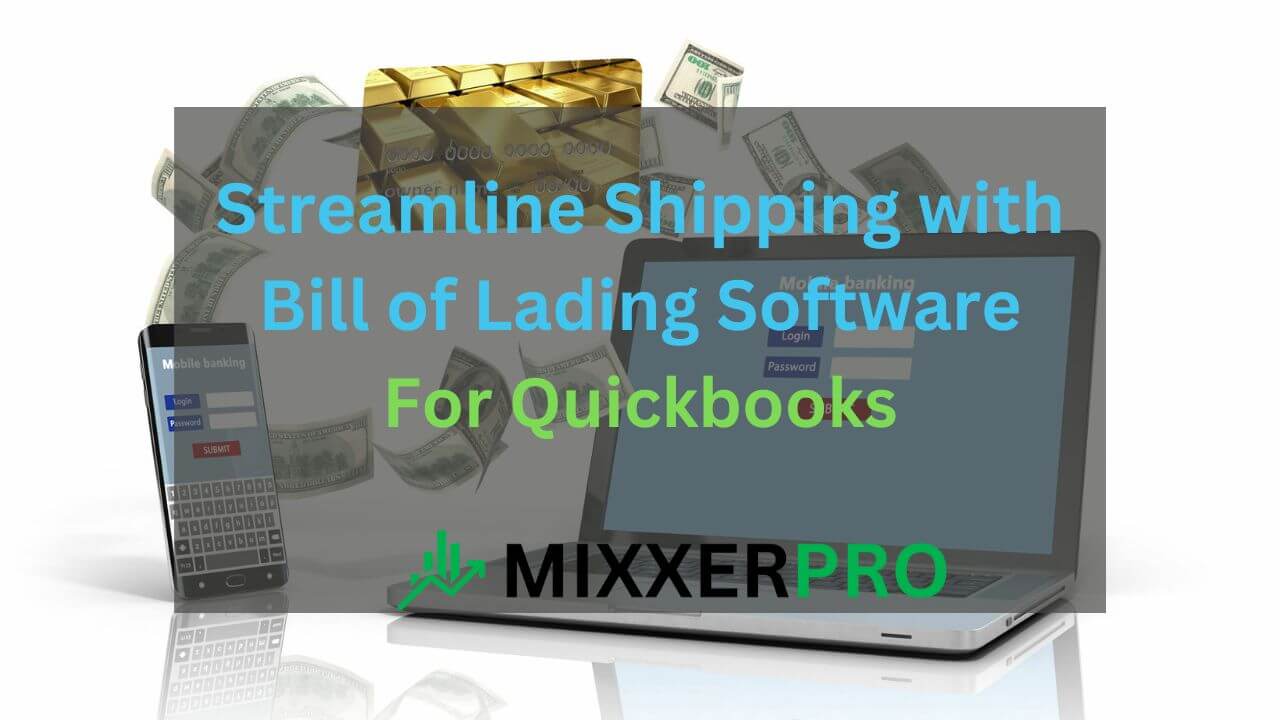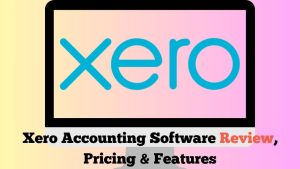Bill of Lading Software for Quickbooks
For efficient management of bill of lading documents in Quickbooks, consider using bill of lading software specifically designed for integration with Quickbooks. This software streamlines the process of creating, tracking, and managing bill of lading documents within Quickbooks, enhancing overall efficiency and accuracy in shipping and logistics operations.
By integrating bill of lading software with Quickbooks, businesses can eliminate the need for manual data entry and reduce errors, saving time and improving productivity.
Table of Contents
Challenges In Shipping Processes
Shipping processes play a crucial role in the smooth functioning of businesses, whether they involve domestic or international shipments. However, many organizations face various challenges when it comes to managing their shipping processes efficiently. These challenges can often lead to delays, errors, and increased costs. In this section, we will explore some common challenges that businesses encounter in their shipping processes and how Bill of Lading software for QuickBooks can help overcome them.
Manual Documentation
One of the significant challenges in shipping processes is the reliance on manual documentation. Traditionally, shipping documents such as bills of lading, invoices, and shipping labels were prepared manually, requiring significant time and effort. This manual approach not only increases the chances of errors but also slows down the entire shipping workflow.
By implementing Bill of Lading software for QuickBooks, businesses can automate the documentation process, streamlining the creation and management of shipping documents. This software allows users to generate bills of lading, invoices, and other necessary documents with just a few clicks, eliminating the need for manual data entry and reducing the likelihood of errors.
Data Entry Errors
Data entry errors are another common challenge faced by businesses in their shipping processes. Manually entering shipment details can result in mistakes such as incorrect addresses, wrong item quantities, or misspelled customer names. These errors can lead to shipment delays, customer dissatisfaction, and increased costs due to reshipping or returns.
With Bill of Lading software for QuickBooks, businesses can minimize data entry errors and ensure accurate and consistent shipping information. The software integrates directly with QuickBooks, allowing users to automatically populate shipment details from existing customer and product records. This integration not only saves time but also reduces the risk of inputting incorrect information, ensuring seamless and error-free shipping processes.
Lack Of Integration
The lack of integration between different systems and software used in shipping processes is another significant challenge that businesses face. For instance, if shipping software and accounting software are not integrated, it can lead to duplicate data entry, discrepancies between financial records and shipping records, and a lack of real-time visibility into shipment status.
By leveraging Bill of Lading software for QuickBooks, organizations can bridge this integration gap. The software synchronizes shipping data with QuickBooks, ensuring seamless communication between the two systems. This integration allows for accurate and up-to-date information across both shipping and accounting processes, enabling businesses to make informed decisions and have a comprehensive view of their operations.
Benefits Of Using Bill Of Lading Software
When it comes to streamlining your shipping and logistics processes, utilizing bill-of-lading software can significantly enhance efficiency and accuracy. This powerful tool not only automates shipping documentation, reducing data entry errors, but it also seamlessly integrates with Quickbooks. Let’s delve into the specific benefits offered by this software:
Automation Of Shipping Documentation
With bill of lading software, the hassle of manually creating and managing shipping documents becomes a thing of the past. This software automates the entire process, generating accurate and professional-looking bills of lading within seconds. By eliminating the need for manual data entry, it saves you valuable time and reduces the risk of errors that often occur when inputting information manually.
Reduced Data Entry Errors
Data entry errors can cause a ripple effect of issues in your shipping operations. By using the bill of lading software, you can bid farewell to these errors. The software prompts you to input the necessary data in a structured manner, minimizing the chance of overlooking important details. It also verifies and validates the entered information, ensuring accuracy and consistency throughout the shipping documentation.
Seamless Integration With Quickbooks
Integrating bill of lading software with Quickbooks is a game-changer for businesses. This integration allows for seamless data transfer between the two systems, eliminating the need for manual data entry or reconciling discrepancies. Whether it’s invoicing, inventory management, or financial reporting, the software automatically synchronizes the shipping data with Quickbooks, ensuring that every transaction and record is accurately reflected in your accounting system.
Overall, the benefits of using the bill of lading software for Quickbooks are clear. The automation of shipping documentation, reduction of data entry errors, and seamless integration with Quickbooks all contribute to streamlining your shipping operations, saving time, and improving accuracy. Embrace the power of technology and elevate your logistics processes with bill-of-lading software.
Key Features Of Bill Of Lading Software
Bill of Lading Software is an essential tool for businesses that want to streamline their shipping and logistics processes. With the ability to integrate seamlessly with Quickbooks, this software offers a range of key features that can help businesses save time, reduce errors, and improve their overall efficiency.
Electronic Templates
One of the standout features of Bill of Lading Software is the availability of electronic templates. These templates allow businesses to quickly generate professional, accurate, and legally compliant bill of lading documents with just a few clicks. Gone are the days of manually filling out paper forms, resulting in errors and wasted time.
| Key benefits of electronic templates: |
| • Time-saving: With pre-defined templates, you no longer need to start from scratch every time you need to create a bill of lading. Simply select the appropriate template, populate the required fields, and have a professionally formatted and accurate document ready in minutes. |
| • Consistency: Electronic templates ensure that your bill of lading documents adhere to your company’s specific format and layout, maintaining a consistent and professional image. |
| • Automation: Integrated bill of lading templates can automatically pull relevant information, such as customer details, product descriptions, and shipping addresses, from your Quickbooks database, eliminating the need for duplicate data entry. |
Customization Options
Another valuable feature of Bill of Lading Software is the ability to customize your Bill of Lading documents to suit your business’s specific needs and branding. This software allows you to create customizable templates that reflect your company’s unique style and design elements.
| Key customization options include: |
| • Branding: Incorporate your company logo, colors, fonts, and other brand elements into your bill of lading templates to reinforce your brand identity. |
| • Layout: Customize the layout of your bill of lading documents to include or exclude specific fields, rearrange sections, and adjust font sizes to match your preferred aesthetic. |
| • Additional fields: Add extra fields and sections to your templates to capture any necessary information that may not be included in standard bill of lading forms. |
Digital Signatures
In the digital age, ensuring the authenticity and integrity of documents is crucial. Bill of Lading Software addresses this concern by providing the option to incorporate digital signatures into your generated documents. This feature allows you to securely sign and authenticate your bill of lading forms electronically, eliminating the need for cumbersome physical signatures.
| Benefits of digital signatures: |
| • Security: Digital signatures offer a high level of security, preventing unauthorized alterations and ensuring the integrity of your bill of lading documents. |
| • Convenience: With digital signatures, you no longer need to print, sign, scan, or fax physical documents. Simply sign electronically, saving time and reducing paperwork. |
| • Legally binding: Digital signatures have legal validity, ensuring that your bill of lading documents are accepted and recognized as authentic in legal and business transactions. |

Credit: nanonets.com
Integration With Quickbooks
The integration of Bill of Lading Software with Quickbooks is a significant asset for businesses seeking efficient and streamlined operations. With the power of integration, companies can seamlessly merge their shipping and invoicing processes, saving time and reducing the risk of errors. This blog post will provide an overview of Quickbooks integration, highlighting the benefits of automated data sync and invoice generation.
Overview Of Quickbooks Integration
The Bill of Lading Software’s integration with Quickbooks allows for a smooth exchange of data between the two platforms. By connecting these systems, businesses can eliminate the need for manual data entry and the possibility of transcription errors. The integration ensures that all relevant shipping and invoicing information is seamlessly transferred from the Bill of Lading Software to Quickbooks, enabling a more efficient and accurate workflow.
Automated Data Sync
One of the key benefits of integrating Bill of Lading Software with Quickbooks is the automated data sync functionality. With this feature, businesses can say goodbye to the tedious task of manually transferring data between the two systems. The integration enables automatic synchronization of data, ensuring that any updates or changes made in either platform are reflected in real-time. This automated data sync not only saves time but also minimizes the risk of data discrepancies, safeguarding the integrity of business records.
Invoice Generation
Another valuable aspect of integrating Bill of Lading Software with Quickbooks is the seamless invoice generation process. With this integration, businesses no longer have to create invoices separately and risk potential errors and delays. The Bill of Lading Software automatically generates invoices within Quickbooks, utilizing the shipping and billing data entered into the system. This streamlined workflow ensures that invoices are accurate, consistent, and promptly generated, enhancing the customer experience and facilitating timely payments.
Choosing The Right Bill Of Lading Software
When it comes to managing your shipping and logistics operations, having the right bill of lading software is essential. With the right software solution, you can streamline your processes, improve efficiency, and ensure compliance with industry regulations. But with so many options available, how do you choose the right bill of lading software for your business? In this article, we will explore the key factors to consider when selecting a software solution, including compatibility with QuickBooks, usability and user experience, and security and compliance measures.
Compatibility With Quickbooks
One of the most important factors to consider when choosing bill-of-lading software is its compatibility with QuickBooks. QuickBooks is a popular accounting software used by many businesses, and integrating your bill of lading software with QuickBooks can save you time and effort by automating data transfer between the two systems. Look for a software solution that offers seamless integration with QuickBooks, allowing you to easily import and export data, synchronize invoices and payments, and generate reports. By choosing software that is compatible with QuickBooks, you can ensure smooth and efficient financial management.
Usability And User Experience
Another important factor to consider is the usability and user experience of the bill of lading software. You want a software solution that is intuitive and easy to use, with a user-friendly interface and straightforward navigation. The software should have features that simplify the creation and management of bill of lading forms, such as pre-filled templates and automated calculations. Additionally, look for software that offers customization options, allowing you to tailor the software to your specific business needs. A user-friendly and customizable bill of lading software can greatly improve productivity and minimize the learning curve for your employees.
Security And Compliance Measures
Ensuring the security and compliance of your shipping and logistics operations is crucial. When choosing a bill of lading software, it is essential to consider the security features and compliance measures offered by the software solution. Look for software that provides secure data encryption, password protection, and user access controls to safeguard your sensitive information. Additionally, check if the software is compliant with industry regulations and standards, such as the Electronic Signatures in Global and National Commerce Act (ESIGN) and the Uniform Electronic Transactions Act (UETA). By selecting a software solution with robust security and compliance measures, you can protect your business from data breaches and legal issues.

Credit: www.quora.com
Implementing Bill Of Lading Software
Integrating or implementing Bill of Lading Software for Quickbooks into your business operations can streamline your shipping processes, improve efficiency, and enhance customer satisfaction. To successfully implement this software, it is essential to consider factors such as system requirements, data migration, and training and support.
System Requirements And Setup
Before implementing Bill of Lading Software, it is crucial to ensure that your system meets the requirements. Reviewing the system specifications will help guarantee a seamless integration and optimal performance. The specific requirements may vary based on the software provider, so it’s important to consult the documentation or contact the support team for detailed information.
Once you have verified the system requirements, the software setup process can begin. This typically involves downloading and installing the software onto your existing Quickbooks platform. The software provider will generally provide step-by-step instructions to guide you through this process. Following these instructions carefully will ensure a successful setup and enable you to maximize the features and benefits of the Bill of Lading Software.
Data Migration
When implementing Bill of Lading Software, you will need to migrate your existing data into the new system. This includes customer details, inventory information, and any previous shipping records. The process of data migration should be handled with care to avoid any loss or corruption of data.
To migrate your data effectively, follow these steps:
- Back up all your data from the current system to ensure its safety.
- Export the necessary data files in a compatible format.
- Import the data files into the Bill of Lading Software.
- Verify the accuracy of the migrated data by cross-referencing it with your original records.
By following these steps, you can ensure a smooth transition and maintain the integrity of your data within the new software environment.
Training And Support
Investing in comprehensive training and support is vital for the successful implementation of Bill of Lading Software. Proper training will enable your employees to utilize the software’s features effectively, improving their productivity and reducing potential errors. Additionally, having reliable customer support ensures prompt assistance in case of any technical issues or questions.
The software provider may offer training resources such as user manuals, online tutorials, or even on-site training sessions. Taking advantage of these resources will enable your team to become proficient in using the software and harness its full potential.
In addition to training, having access to a responsive and knowledgeable support team is crucial. They can assist with troubleshooting, answer questions, and provide guidance whenever needed. Before selecting a Bill of Lading Software provider, make sure to assess the level of support they offer and check customer reviews to gauge their reputation in providing quality assistance.
Implementing Bill of Lading Software for Quickbooks can significantly streamline your shipping processes and enhance your business efficiency. By considering system requirements, ensuring smooth data migration, and investing in adequate training and support, you can maximize the benefits of this software and improve your overall shipping operations.
Cost And Return On Investment
The cost and return on investment of using Bill of Lading software for Quickbooks is a wise decision for businesses looking to streamline their shipping processes. It offers efficiency, accuracy, and time-saving benefits, ensuring a positive impact on the bottom line.
When considering implementing a new software solution for your business, understanding the cost and potential return on investment (ROI) is crucial. This is especially true when it comes to Bill of Lading software for QuickBooks. In this section, we will explore the comparison of software costs and the importance of calculating ROI to help you make an informed decision for your business.
Comparison Of Software Costs
Before investing in Bill of Lading software for QuickBooks, it’s essential to compare the costs of different software options available in the market. By doing so, you’ll be able to identify which solution best suits your budget and requirements. Here’s a comparison of the typical costs involved:
| Software | Cost |
| Freshbooks | $15 |
| Wave Accounting | $20 |
| Xero | $20 |
As you can see, there are various pricing options available, and it’s crucial to choose one that fits within your budget.
Calculation Of Roi
Calculating the ROI of investing in Bill of Lading software for QuickBooks can help you determine its financial impact on your business. Knowing the potential return on investment will give you a clear picture of whether the software is worth the initial cost. Consider the following factors when calculating ROI:
- Reduction in manual data entry and administrative tasks, leading to increased productivity and time savings
- Improved accuracy and minimize errors in the bill of lading documentation
- Streamlined communication with carriers, resulting in faster turnaround times
By considering these factors, you can estimate the financial benefits and cost savings that the software will bring to your business. Keep in mind that the ROI calculation may vary for each company, depending on its size, industry, and specific requirements.
In conclusion, understanding the cost and return on investment of Bill of Lading software for QuickBooks is essential before making a decision. Comparing software costs and calculating ROI will help you evaluate the financial impact and make an informed choice that aligns with your business goals.
Case Studies
Implementing Bill of Lading software for Quickbooks has proven to be a game-changer for many companies. Let’s explore some real-life case studies of companies that have experienced significant improvements through the use of this software.
Company A: Increased Efficiency
Company A, a logistics provider with a large fleet, was struggling to manage its bill of lading processes efficiently. They often faced delays, errors, and lost paperwork, leading to customer dissatisfaction and financial losses. Seeking a solution, they integrated Bill of Lading software into their existing Quickbooks system.
The results were remarkable. With the software’s automated features, Company A experienced a significant increase in efficiency. The process of generating bills of lading and tracking shipments became streamlined, eliminating the need for manual entry and reducing the chances of errors. The software also provided real-time visibility into shipments, allowing Company A to proactively address any issues that arose.
By utilizing Bill of Lading software for Quickbooks, Company A was able to enhance its operational efficiency, resulting in improved customer satisfaction and cost savings.
Company B: Error Reduction
Company B, a manufacturer and distributor, was struggling to minimize errors in their bill of lading documentation. They often encountered discrepancies between the details recorded in their Quickbooks system and the actual shipment information. These errors led to order delays, incorrect invoicing, and customer complaints.
By implementing Bill of Lading software for Quickbooks, Company B was able to reduce errors significantly. The software’s integration with their existing QuickBooks system ensured that the shipment details were accurately recorded and synchronized across all relevant documents. Additionally, automated checks and validations within the software helped identify any discrepancies, allowing Company B to rectify them promptly.
As a result, Company B experienced improved accuracy in its bill of lading processes, reducing order delays, invoice errors, and customer complaints, ultimately strengthening its reputation and customer relationships.
Company C: Time Savings
Company C, a national transportation service provider, was looking for ways to optimize its time-consuming bill of lading procedures. Their existing manual processes required repetitive data entry, leading to inefficiencies and wasted resources.
Upon integrating Bill of Lading software with Quickbooks, Company C experienced a significant reduction in time spent on paperwork. The software’s automation eliminated the need for manual data entry, reducing human errors and freeing up valuable time for their staff to focus on more critical tasks.
Furthermore, the software’s centralized database allowed for easy retrieval and sharing of bill of lading data, enhancing collaboration among various teams involved in the shipping process.
By leveraging Bill of Lading software for Quickbooks, Company C was able to save valuable time, improving operational productivity and enabling their employees to dedicate their efforts to more value-added activities.
Tips For Successful Implementation
Implementing a new software system for your business can be a daunting task, but with proper planning and execution, it can lead to significant improvements in your operations. When it comes to a Bill of Lading software for Quickbooks, following best practices is essential for a successful implementation. In this article, we will provide you with valuable tips to ensure a smooth and efficient integration of the software into your business processes.
Define Clear Objectives
- Begin by clearly defining your objectives for implementing the Bill of Lading software.
- Identify the specific areas of your business that you wish to improve and the goals you want to achieve with the software.
- Consider the pain points in your current processes and how the software can address them.
- Set measurable targets and key performance indicators (KPIs) to track the success of the implementation.
Engage Employees
- Ensure that your employees are involved in the implementation process right from the start.
- Communicate the reasons for the software implementation and how it will benefit them and the company as a whole.
- Provide training and resources to help employees understand the new system and its features.
- Encourage employee feedback and address any concerns or resistance to change promptly.
Continuous Evaluation And Improvement
- Implementation doesn’t end with the initial setup. It’s crucial to continuously evaluate the performance of the Bill of Lading software and make necessary adjustments.
- Regularly review the KPIs set during the planning phase to track progress and identify areas for improvement.
- Seek feedback from your team and stakeholders to identify any issues or bottlenecks.
- Stay updated with software updates and new features to take full advantage of its capabilities.
In conclusion, successful implementation of Bill of Lading software for Quickbooks requires well-defined objectives, employee engagement, and continuous evaluation and improvement. By following these tips, you can streamline your operations, improve efficiency, and maximize the benefits of your software investment.
Frequently Asked Questions For Bill Of Lading Software For Quickbooks
Does Quickbooks Offer a Bill Of Lading?
Yes, QuickBooks does offer a bill of lading. You can easily create and customize bill of lading forms in QuickBooks to track and manage shipments.
Does Quickbooks Do Bill Of Materials?
Yes, QuickBooks does offer a bill of materials feature. It helps businesses keep track of their inventory, monitor costs, and manage the assembly process efficiently.
How Do I Create A Bill Of Lading?
To create a bill of lading, follow these steps: 1. Gather the necessary information, including the shipper and recipient details, description of goods, and shipping date. 2. Use a bill of lading template or create your own, ensuring it includes relevant fields like product details, quantities, and freight charges.
3. Fill in all required details accurately and legibly. 4. Verify the accuracy of the information before signing and providing copies to the necessary parties. 5. Retain a copy for your records and consider using digital solutions for easier management.
How Do I Set Up Shipping In Quickbooks?
To set up shipping in QuickBooks, navigate to the company settings and select “Sales” or “Invoicing. ” Click on the “Shipping” tab and enable the option to track shipping in your invoices. Customize shipping preferences, such as carrier details and rates, and save your settings to start using shipping in QuickBooks.
Conclusion
Utilizing a Bill of Lading software integrated with Quickbooks proves to be a game-changer for businesses. Automating the process saves time, reduces errors, and ensures accurate documentation and streamlined operations. With its user-friendly interface and seamless integration, this software simplifies the workflow and enhances efficiency.
Implementing this solution empowers businesses to optimize their logistics management and stay ahead in the competitive market. Simplify your shipping process and experience the benefits of Bill of Lading software for Quickbooks today.




